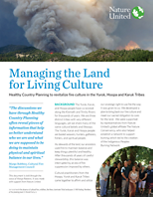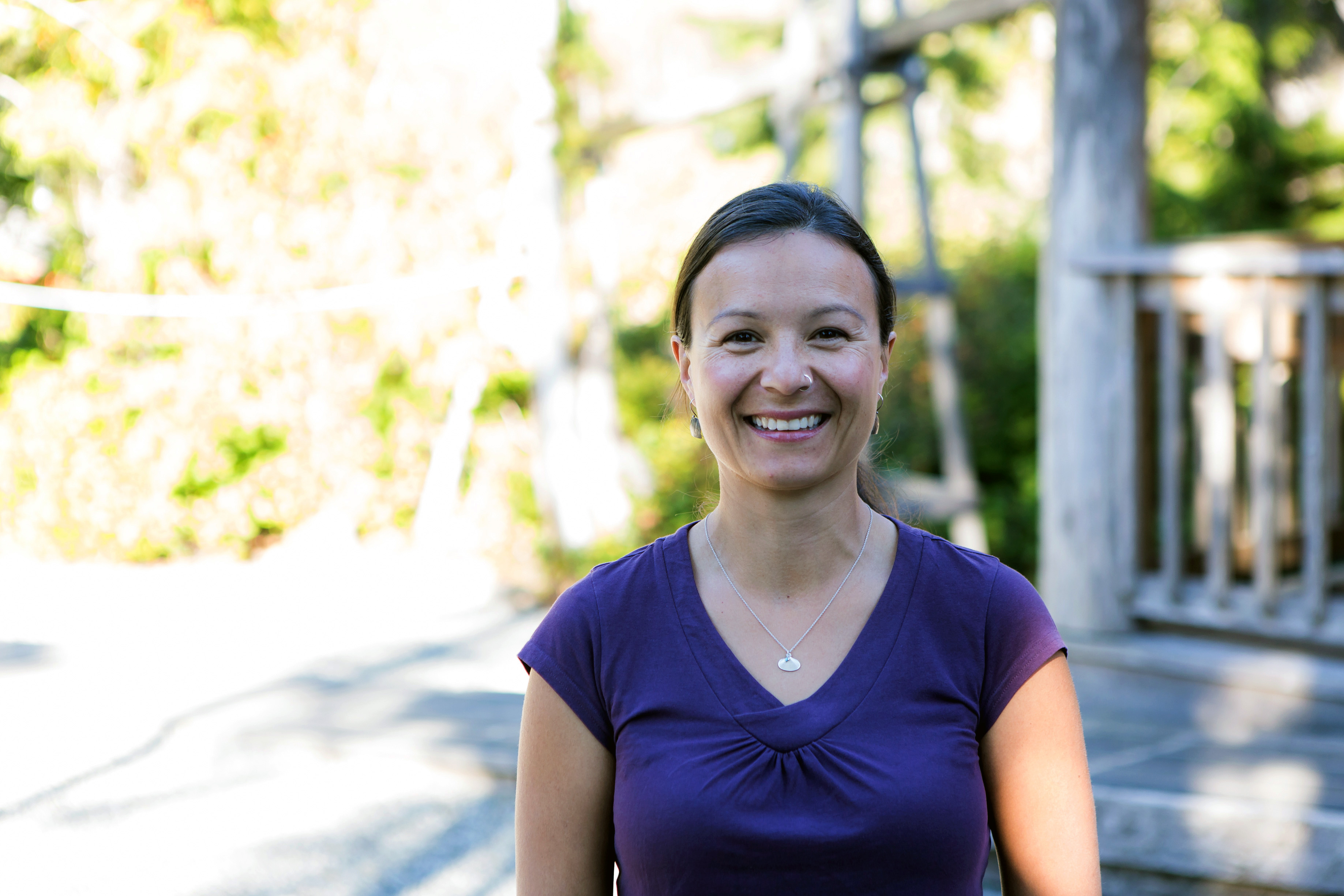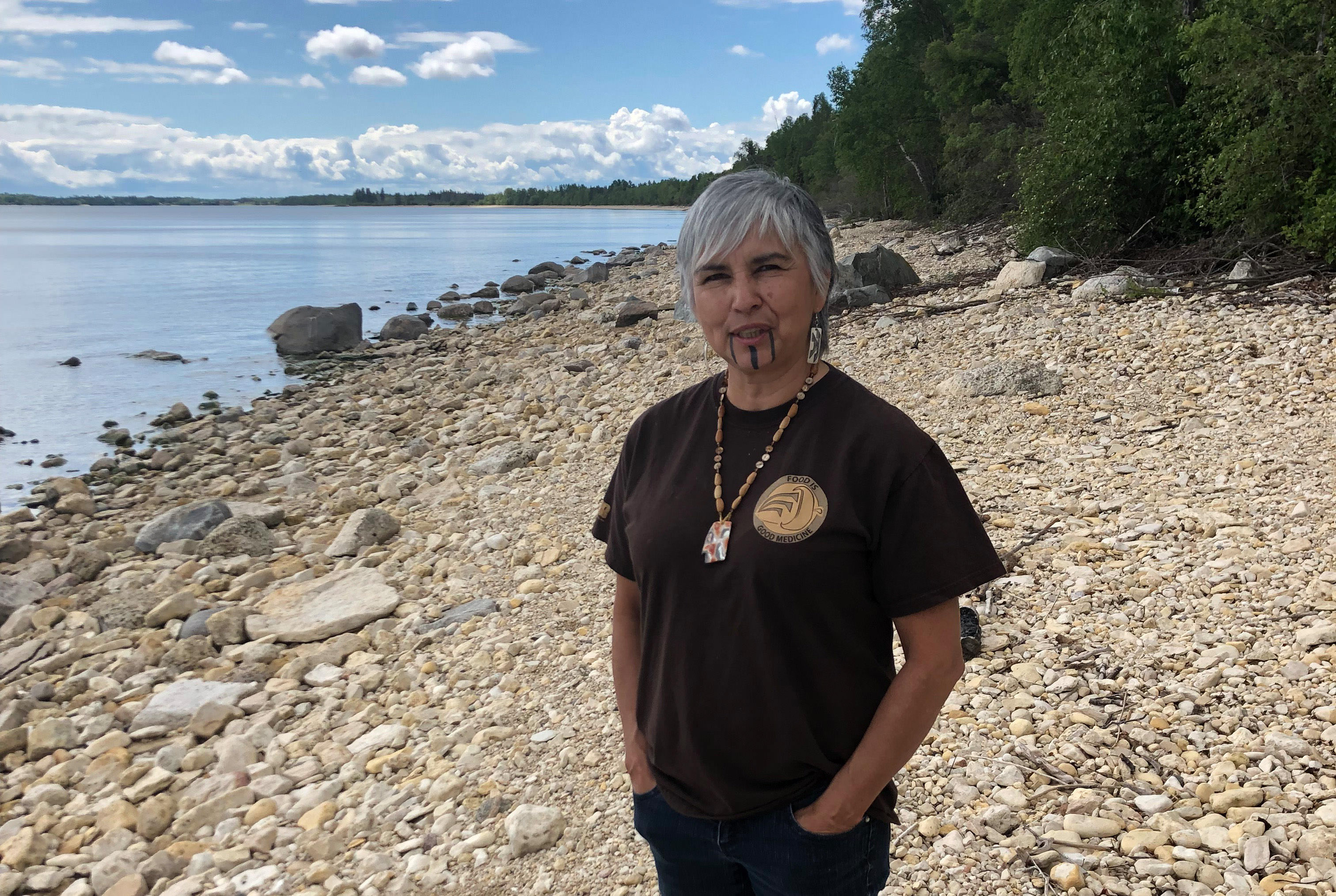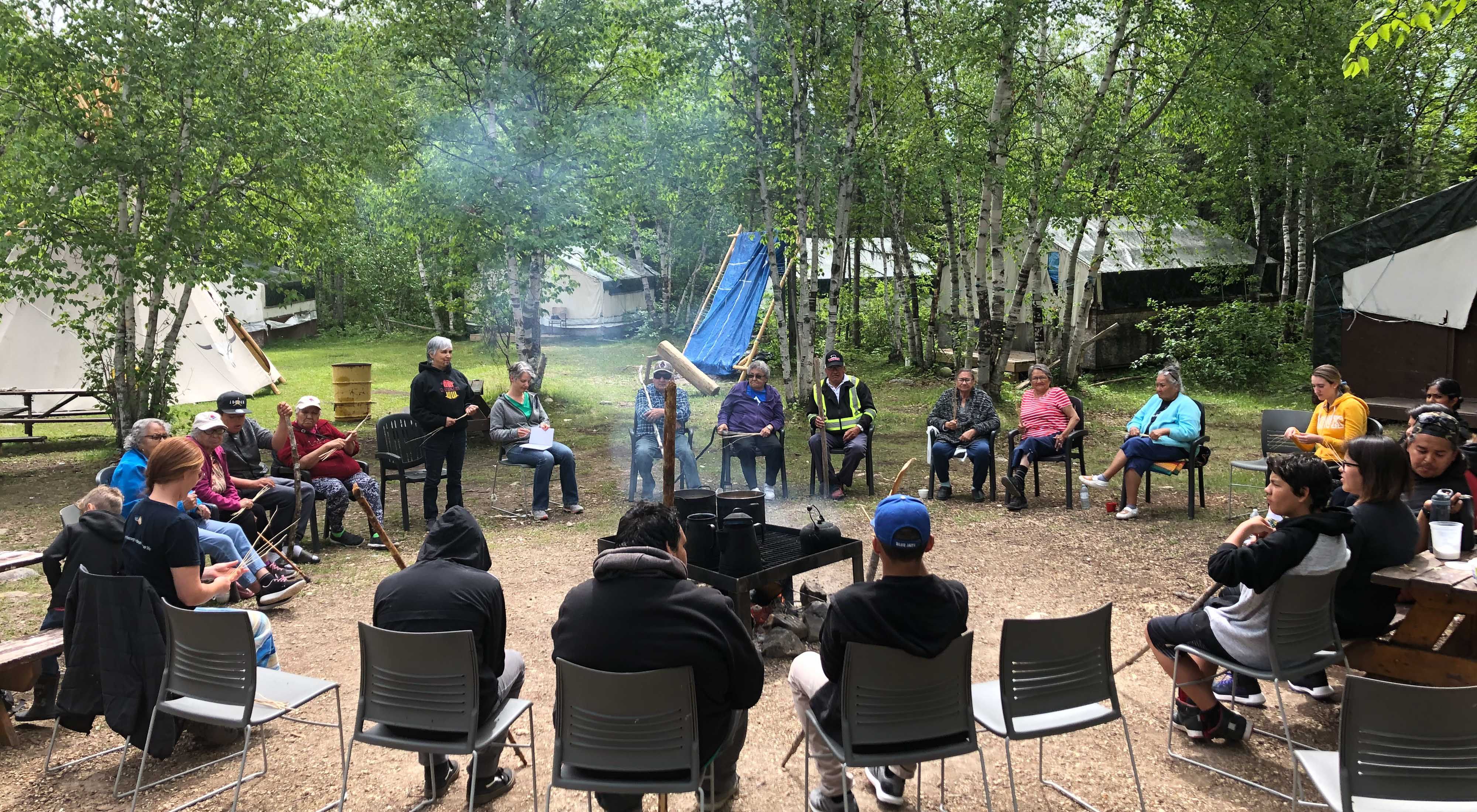Managing the Land for Living Culture
Exploring Healthy Country Planning as a tool for integrating culture into conservation—from California to Manitoba and beyond.
By Margo Robbins (Yurok Tribe) and Amanda Karst (Nature United)
On a beautiful summer morning on the shore of Lake Winnipeg, near Grand Rapids, Manitoba, we sat in a circle near a campfire with community leaders, Elders and youth from the Misipawistik Cree Nation. Margo Robbins, a member of the Yurok Tribe, had travelled many hours from her tribal community in northern California to share her experiences with Healthy Country Planning, which she describes as “managing the land for living culture.” Ravens clicked and squawked from the treetops, and hot water bubbled in an iron kettle over the fire. We felt fortunate to be gathering as part of the Misipawistik Pimatisimeskanaw, a program that offers culturally relevant teachings to help youth reconnect with their culture, rebuild connections to their ancestral land and promote healthy living. And we were still energized from the meetings we’d had the day before in Opaskwayak Cree Nation, farther west near The Pas, Manitoba.
What Is Healthy Country Planning
-

-
 Case Study
Case StudyRead about how HCP helped revitalize fire culture in the Yurok, Hoopa and Karuk Tribes.
DOWNLOAD
Defining a Collective Vision
Cultural practitioners from Robbins’ tribe, the Yurok, and neighbouring tribes, the Karuk and Hupa, worked together over three years to identify what they valued most in their lands and waters, what was imperiling those values, and what their communities could do to protect and care for those values. Their cultural use of fire formed the core of their planning. “We never gave up our sovereign right to use fire,” Robbins shared. “We use fire as a tool to restore our homelands and keep our cultural traditions alive. Our culture is fire-dependent. Our traditional foods, medicine, cordage and items used for ceremonial regalia all benefit from fire. Fire is about new life.”
For the Yurok and other tribes, fire ensures that hazel sticks are in abundance for making baby carriers, baskets to collect wild foods such as acorns, and ceremonial regalia. Through Healthy Country Planning, the tribes came together to define a collective vision for the future of their lands and waters, as well as identified tangible actions for achieving that vision. Margo underscored the importance of the process in her community, telling the group, “When our land is healthy, and our spiritual and cultural connection to our land is healthy, then we, as a people, will be healthy again.”
Quote: Margo Robbins

When our land is healthy, and our spiritual and cultural connection to our land is healthy, then we, as a people, will be healthy again.
"Being in Relationship to Everything"
Heidi Cook, a councilor and lead for lands initiatives for Misipawistik, echoed that while Indigenous peoples may express their culture in different ways, they all share a strong connection to their lands and waters: “When we stand up to reclaim our place and uphold the natural laws of the land, it looks very different, but the feeling is the same across all Indigenous peoples.” Becky Cook, who leads the youth program for Misipawistik, shared a teaching from Peter O’Chiese about the Cree word wakohtowin. The word means being in relationship to everything—to the land, to the animals, to the plants, and to each other. “He said colonialism has shattered wakohtowin like a mirror,” Becky said. “It’s up to us to put all the pieces back together.” She added, speaking to youth, Elders and everyone in-between, “By sitting in a circle and sharing our knowledge, we work towards rebuilding wakhotowin”

Building Our Understanding
Nature United is supporting Indigenous communities in British Columbia, the Northwest Territories and northern Manitoba in exploring whether Healthy Country Planning could be a valuable tool for integrating their conservation, cultural and social goals. The framework is increasingly being used by communities around the world to create land-use plans, wildlife management plans, protected-area plans and more.
Nature United also hosted a training session a month earlier that brought together representatives from Parks Canada, Nature Conservancy of Canada, Canadian Wildlife Service, Fort Folly First Nation, Opaskwayak Cree Nation, the Tlicho Government, and several consultants to explore what Healthy Country Planning might mean for them and their work with Indigenous communities.

Carla Buck, the land-use planning coordinator for Opaskwayak, reflected, “Our training in May showed us how to work together with people to strategize, understand issues and figure out actions. Then, through Margo’s presentation, we saw the end result, which was really helpful. It made me want to help create something like that for OCN.”
There was sharing around the circle as Misipawisik Cree Nation looks to continue their work to protect their territory and create a community-driven plan that guides that work, which integrates their new Indigenous Guardian program and ambitions to create an Indigenous protected area. As the campfire crackled and more cups of tea were poured, Margo shared, “The discussions we have through Healthy Country Planning often reveal pieces of information that help us better understand who we are and what we are supposed to be doing to maintain physical and spiritual balance in our lives.”
About the Authors
-

Amanda Karst
Amanda Karst joined Nature United in 2016 as Community Outreach Coordinator. She is Metis, originally from Saskatchewan, and now based in Manitoba. Read More
-

Margo Robbins
Margo Robbins is a member of the Yurok Tribe. She is the co-founder and president of the Cultural Fire Management Council (CFMC) and co-lead and advisor for the Indigenous People's Burn Network. Learn More
Support This Work
Get in touch with us to learn more about our work to support Indigenous-led conservation, or make a secure online donation.
